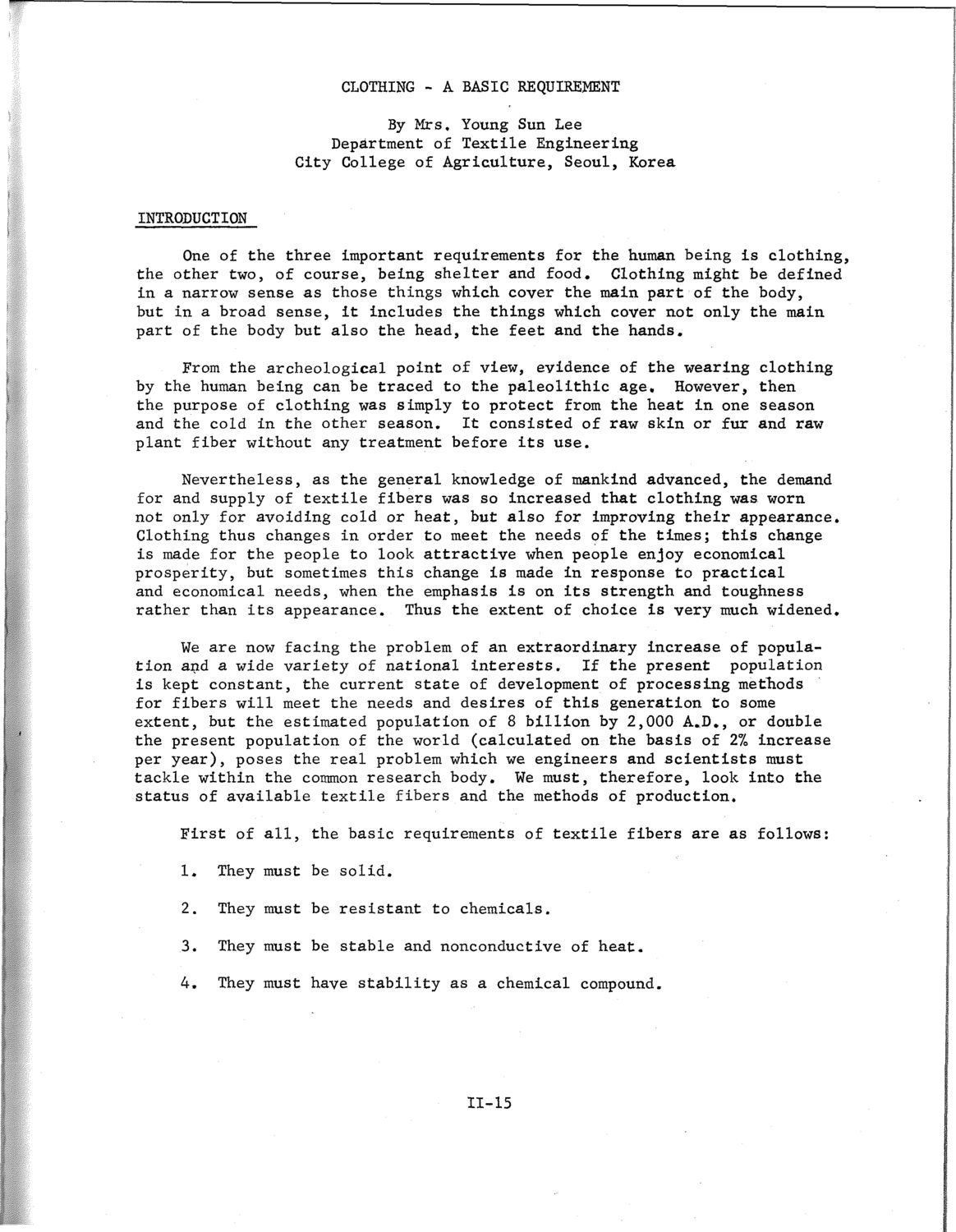| |
| |
Caption: SWE - Proceedings of the First International Conference of Women Engineers and Scientists
This is a reduced-resolution page image for fast online browsing.

EXTRACTED TEXT FROM PAGE:
CLOTHING - A BASIC REQUIREMENT By Mrs. Young Sun Lee Department of Textile Engineering City College of Agriculture, Seoul, Korea INTRODUCTION One of the three important requirements for the human being is clothing, the other two, of course, being shelter and food. Clothing might be defined in a narrow sense as those things which cover the main part of the body, but in a broad sense, it includes the things which cover not only the main part of the body but also the head, the feet and the hands. From the archeological point of view, evidence of the wearing by the human being can be traced to the paleolithic age. However, the purpose of clothing was simply to protect from the heat in one and the cold in the other season. It consisted of raw skin or fur plant fiber without any treatment before its use. clothing then season and raw Nevertheless, as the general knowledge of mankind advanced, the demand for and supply of textile fibers was so increased that clothing was worn not only for avoiding cold or heat, but also for improving their appearance. Clothing thus changes in order to meet the needs of the times; this change is made for the people to look attractive when people enjoy economical prosperity, but sometimes this change is made in response to practical and economical needs, when the emphasis is on its strength and toughness rather than its appearance. Thus the extent of choice is very much widened. We are now facing the problem of an extraordinary increase of population and a wide variety of national interests. If the present population is kept constant, the current state of development of processing methods for fibers will meet the needs and desires of this generation to some extent, but the estimated population of 8 billion by 2,000 A.D., or double the present population of the world (calculated on the basis of 270 increase per year), poses the real problem which we engineers and scientists must tackle within the common research body. We must, therefore, look into the status of available textile fibers and the methods of production. First of all, the basic requirements of textile fibers are as follows: 1. 2. 3. 4. They must be solid. They must be resistant to chemicals. They must be stable and nonconductive of heat. They must have stability as a chemical compound. 11-15
| |